Exploring the Pacific Northwest by RV offers endless adventure – from national parks to coastal towns. If you’re planning to Workamp in the PNW, these destinations make the perfect side trips on your days off. To find your next opportunity in this region, browse the latest Workamper News Job Listings.
Commonly referred to as Cascadia, the region generally includes Washington, Oregon, Idaho and northwest Montana as well as parts of western Canada.
From a geographic perspective, the Pacific Northwest is very diverse. There are desert-like conditions in eastern Washington, and a rain forest in the western part of the state. Much of the Pacific Northwest is covered by vast forests, while Puget Sound enables sea life, like whales, to frolic inland from the Pacific ocean.
Its famous mountain ranges include a few volcanoes, as the country discovered when Mount St. Helens blew its top in May 18, 1980, and destroyed miles of forest land in the process.
While there are a few megacities, like Seattle and Portland, much of the region is comprised of smaller communities connected by miles of open road. Visitors can immerse themselves in a multitude of natural and manmade attractions.
From spring to fall, the climate in the Pacific Northwest is generally comfortable in the mid-70s. Winters can be brutal for snowfall in the mountains and for rain – lots of rain – in the eastern areas.
If you’re Workamping in Washington, Oregon, Idaho or Montana, these are some of the incredible places you’ll have nearby. Let’s explore some of the most popular things to do in the Pacific Northwest.
Washington – The Evergreen State
I’ll start with Washington because it holds a special place in my heart. When I was 20 years old, I took a train from Wisconsin to Seattle on my first solo vacation. I quickly fell in love with the area, not just for its scenic beauty, but the variety of things to do.
I visited long before three of America’s largest companies – Amazon, Costco and Microsoft – set up shop in the Seattle area, which brought lots of people and traffic to the region. Still, Seattle remains one of my all-time favorite places to visit. Here’s why:
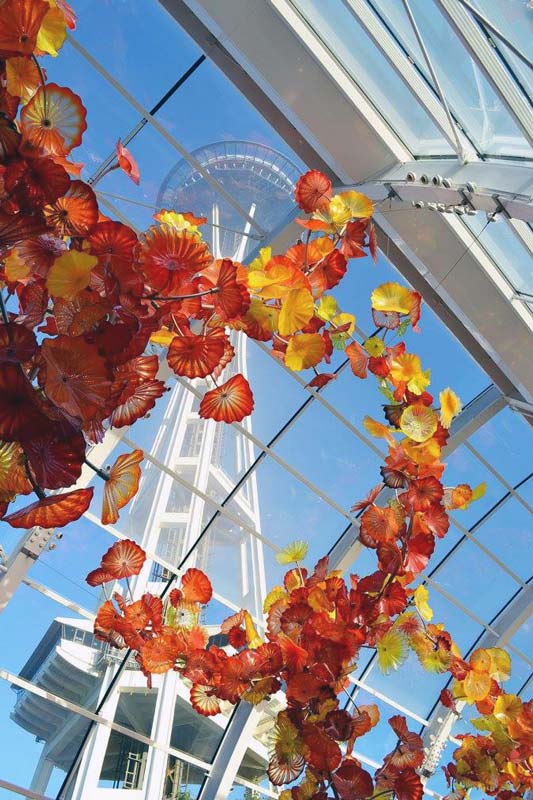
- Space Needle – Towering above the downtown neighborhood, the 605-foot tower, topped by a flying-saucer-like hovering disk, was built as a showcase attraction for the 1962 World’s Fair. It features a 360-degree observation area near the top from which people can view Puget Sound, Mt. Rainer and even into Canada on a clear day. A rotating restaurant gives people a panoramic view of the city while enjoying a meal or even dessert.
- Chihuly Gardens – Located just below the Space Needle, the colorful glass displays were created by renowned artist, Dale Chihuly. The intense colors of the hand-blown glass are contrasted by the lush green native plants.
- Pacific Science Center – One of the country’s best science museums, its standing exhibits include a butterfly house, seven dinosaurs in a lifelike environment, insect village and an IMAX theater.
- Pike’s Place Market is a year-round standing farmers market where you’ll find the freshest fruit, vegetables, flowers and fish served up daily.
- Across the street from Pike’s Place, you’ll find the original Starbucks location. Enjoy a venti mocha cookie crumble Frappuccino while you walk toward the waterfront.
- Pioneer Square is Seattle’s original downtown with buildings dating back to the mid-1800s. An eccentric collection of art galleries and coffee shops, the area is home to Smith Tower, which was once the tallest building west of the Mississippi when built in 1914.
- Or, step way back in time with a tour of underground Seattle, where original storefronts, sidewalks and streets remain preserved as the city grew “up” around it.
- The waterfront is home to the Seattle Aquarium and its 400,000-gallon tank with underwater dome filled with all kinds of fish. The Great Wheel offers a 15-minute trip in a private gondola to a height of 175 feet, which offers a stunning view of the city and sound. There are some unique souvenir shops in that area along with reasonably-priced restaurants.
- The nearby ferry terminal connects passengers to various locations around Puget Sound.
North of Seattle, the area around Mt. Vernon erupts in color every spring as millions of tulips begin to bloom. For a truly unique experience, take the ferry roundtrip from Anacortes to Friday Harbor, where you can enjoy a meal and do some shopping. Keep your eyes open for whales, dolphins and other sea creatures.
East of Seattle, the city of Leavenworth offers a distinctive German ambiance because it is modeled after a Bavarian village. The city of less than 3,000 people hosts a different festival every month.
South of Seattle, visit Boeing’s Museum of Flight to explore 150 historic aircraft and spacecraft artifacts from an Apollo 17 mission module, to Air Force One and a supersonic Concord. Other exhibits include a spaceflight academy, birth of aviation and the advent of unmanned aircraft.
Point Defiance Park is one of the best county parks in the nation. Visitors can tour the Fort Nisqually living history museum, check out one of nine gardens and enjoy a trip to the zoo or aquarium. The Five Mile Drive is a one-way loop around the peninsula which offers fun views of the famous Tacoma Narrows Bridge. There are plenty of hiking and biking trails as well.
Less than 60 miles southeast of Seattle, the 14,000-foot Mount Rainier can be seen everywhere in the region. A dormant volcano, scientists predict there is a high-probability of eruption sometime soon. Mount St. Helens, a sister volcano located 100 miles south of Seattle, actually erupted May 18, 1980. Visitors can still see the massive destruction it caused.
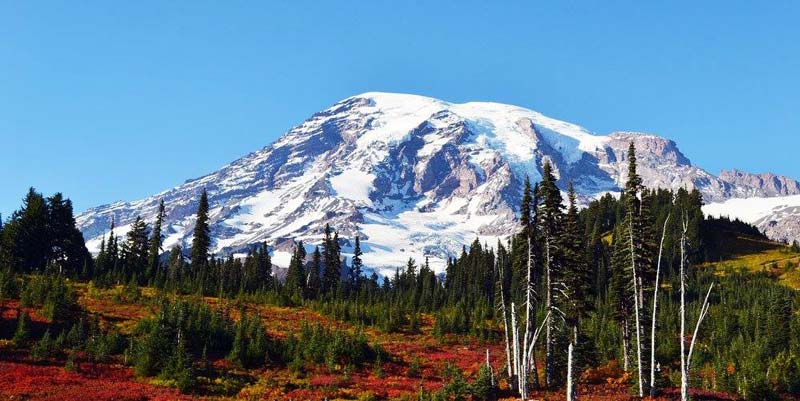
Olympic National Park encompasses a large portion of the state’s northwest peninsula. It is an exceptionally-diverse ecosystem that includes the Pacific coastline, a temperate rainforest, alpine area and typical forest.
There are a plethora of hiking trails in that area as well as skiing, swimming, rafting and fishing. Best of all, the communities in the Olympic Peninsula, many of which are connected via U.S. Highway 101 offer some fun shopping and sightseeing excursions. The communities of Sequim and Port Townsend are particularly charming. Movie buffs will recognize Fort Worden State Park as the location of a number of scenes in An Officer and a Gentleman.
Olympia, Washington’s capitol city, is the gateway to the peninsula, and is beautiful in its own right. It is home to a number of parks and museums.
Across the state in Spokane, the 37-mile paved Centennial Trail makes it easy to walk and bike as it passes through Spokane and neighboring communities on its way to the Idaho border where it connects with the North Idaho Centennial Trail.
The Tri-Cities area of Richland, Kennewick and Pasco is where the Yakima, Snake and Columbia rivers connect. There are seven river-front parks in the region as well as 67 miles of paved bicycle and pedestrian trails.
A key attraction is the Hanford Site, a decommissioned nuclear production complex used to manufacture plutonium for energy and weapons. The site played an instrumental role in the Manhattan Project and the creation of America’s first atomic bombs. The REACH Museum tells the story through interactive displays.
Idaho – The Gem State
Idaho is well known for its potatoes, for which a third of all those consumed in the United States are harvested here. The 13th largest state based on land mass, a third of Idaho’s land is covered by forests and two-thirds of the state is considered public land.
Just under 2 million people call Idaho home, but there are only three cities larger than 100,000 residents. The wide-open spaces border six states as well as Canada. Idaho features purple mountains with snow-capped peaks, massive sand dunes, robust rivers and abundant natural resources, all of which make it popular among people who like to live in and play outdoors.
Idaho is well known for trout fishing, with some estimates suggesting it accounts for 85% of all commercially-sold trout in America. That could be because there are more miles of whitewater river in Idaho than any other state, which also makes it a challenge for paddlesports enthusiasts and a thrill for rafters.
With all those rivers, there are bound to be some spectacular waterfalls. With a 212-foot drop, the Shoshone Falls on Snake River near Twin Falls is nicknamed the Niagara of the West. Springtime is the best viewing experience as winter runoff increases the water flow.

Thousand Springs State Park is actually a conglomerate of four individual parks along the Snake River, which offers views of dozens of waterfalls, especially from Ritter Island.
For people who like to hike, visiting Heaven’s Gate is supposed to be a remarkable trip. From it, people can view the entire state of Idaho as well as peer into Washington, Montana and even Oregon. But, don’t fall! Beneath Heaven’s Gate is Hell’s Canyon. Sinking to a depth of 7,900 feet, it is deeper than the Grand Canyon.
The city of Pocatello designated itself as the Smile Capital of America. In fact, it is technically illegal not to smile in that community of just under 90,000 happy people. Maybe they’re smiling because the community takes cleaning so seriously. It hosts the 75,000-square foot Museum of Clean. Exhibits focus on all things clean from air, water, language, furniture, floors, politics, jokes, teeth, etc.
A short drive southeast brings people to Soda Springs, a city which gets its name from hundreds of natural springs that create carbonated water. In the 1930s, while trying to tap into an underground reservoir of hot water, officials accidentally created a geyser. Once capped, a time-release valve still causes the geyser to erupt every hour on the hour.
Put this on your list of things you don’t see every day. There is a tree beneath the Centennial ski lift at Brundage Mountain Resort near McCall where women have tossed so many bras onto its branches that it has become a tourist attraction. It makes me wonder what’s going on at the top of the mountain.
For a less interesting view, check out the gondola at Silver Mountain Resort in Kellogg, which claims to be the longest gondola ride in the world.
A little closer to earth, the boardwalk around Lake Coeur d’Alene is considered the longest in the world.
In Boise, people can tour the state capitol, which is a mini version of the U.S. Capitol in Washington, D.C. The Idaho Botanical Gardens offers free 90-minute guided tours of its vast collection of plant species. The Old Idaho Penitentiary is right next door where people can take guided tours of the 101-year-old correctional center with roots in the Wild West.
The beautiful Julia Davis Park along the Boise River is comprised of multiple attractions, including:
- Zoo Boise, which features more than 200 animals.
- Discovery Center of Idaho is a kid-friendly interactive science museum featuring exhibits about dinosaurs, the Apollo 11 mission and lots of other interesting displays.
- Boise Art Museum features pieces created by local and world-renowned artists.
- Idaho State Museum’s 500-plus artifacts tell the story of the state, its people and industry.
- Anne Frank Human Rights Memorial is dedicated to the struggle against injustice and oppression wherever it may take place.
While many western states got their start due to a gold rush, for Idaho, it was silver. The area around Coeur d’Alene has been one of the top three silver-producing regions of the world. Visitors to Wallace, Idaho, can tour the Sierra Silver Mine.

In addition to silver, Idaho is also known for its sheep production. The Sun Valley area celebrates its history and importance every October with the Trailing of the Sheep Festival, which includes a big parade in Ketchum. MSN.com considered the event to be one of the Top 10 fall festivals in the world.
You’ll also find alpacas and llamas grazing near Coeur d’Alene, where you can take a guided tour of the Seven Stars Alpaca Ranch. Knitters can buy some unique yarn in the country store.
Craters of the Moon National Monument lets visitors experience a moon-like landscape thanks to the dark black rocks from a large lava field. More than 60 volcanoes have contributed to the out-of-the-world landscape. Because it’s so isolated, the monument is an ideal place to view the Milky Way.
As you plan your trip through the Pacific Northwest, consider Workamping in that region for a season or two. It is a fabulous way to truly experience the scenic beauty and diverse culture.
Oregon – The Beaver State
Like Washington, there is so much for people to do and see in this state that one part of one article can’t begin to do it justice.
People who visited Oregon in the past may have been surprised by a state law dating to 1951 which prohibited drivers from pumping their own gas. However, that law was rescinded in August 2023.
There are more than 80 ghost towns scattered throughout Oregon. If you’re spooked by the experience, don’t worry, there are more than 750 vineyards producing more than 70 different types of grapes. You’ll find ample opportunities to pick up a bottle of wine to calm your nerves.
Once considered the “Pearl of the Northwest,” Portland’s reputation has tarnished in recent years, and safety is a big concern. Yet, it remains an interesting place to visit, and not just because it’s home to more than 60 microbreweries, making it the No. 1 brewery city per capita in the world. Other things to do in Portland include:
- Portland Japanese Garden is a 12-acre private park composed of eight different garden spaces. It features streams, waterfalls and ponds with koi swimming in them. There is also a tranquil and meticulously-raked sand and stone gardens.
- International Rose Test Garden is home to 10,000 individual rose bushes representing 610 flower types. The roses bloom between May and October, and are tested and/or replaced with new varieties.
- Home to more than 2,300 species of trees and shrubs, Hoyt Arboretum has 12 miles of hiking trails crammed into a 189-acre refuge in the middle of Portland.
- Exhibits at the Oregon Museum of Science and Industry focus on natural sciences, industry and technology. The USS Bluejack submarine can be toured, or visitors can enjoy a planetarium show. There is something of interest to people of all ages.
- Pittock Mansion is a 46-room estate resting on a 46-acre now-public park which offers panoramic views of Portland.
About 30 miles east of downtown Portland, the Multnomah Falls mesmerizes 2 million travelers annually. It’s distinctive double-deck water flow over two tiers is Oregon’s largest falls and has been featured in many movies. Located just off Interstate 84, the popular rest stop features a gift shop, snack bar and hiking trail to the top of the falls.
The entire Columbia River Gorge National Scenic Area is actually a spectacularly-beautiful canyon that is 80 miles long and up to 4,000 feet deep. Whether you take a boat tour of the area, drive along Columbia River Highway on the Oregon side, or drive along State Highway 14 in Washington, there are plenty of opportunities to capture stunning photos.
There are a number of waterfalls in the Columbia River Gorge, and the lush green landscape is punctuated by distant snowcapped mountains.
Nike’s worldwide headquarters is located in Beaverton and, yes, you can visit the campus. However, you might want to stop at the store at the visitor’s center first to pick up some new shoes before walking among the 75 buildings scattered around 286 acres. Most buildings are named after legendary athletes and coaches.

With its crystal clear water, not only is Crater Lake a spectacularly scenic place to visit, it’s not a place you’d want drop your phone. Measured to be 1,949 feet deep at its deepest point, it is the seventh deepest lake in the world. The lake actually rests in the remains of an old volcano. The 33-mile Scenic Rim Drive features more than 30 stunning overlooks. People use the road to circumnavigate the lake by car or bicycle.
Eugene is home to the University of Oregon, and one of the most bicycle-friendly cities in America. The city makes hundreds of bikes available for short-term rental at locations throughout the community. Two key attractions include:
- Cascades Raptor Center, which serves as a hospital for sick or injured birds of prey.
- Studio West Glassblowing Studio, where you can learn to create your own ornament, winestopper, bubble bowl or other work of art.
Dozens of small beach communities are connected by Hwy. 101. Whether you are seeking sun or souvenirs, a trip along the highway can be a winding excursion and difficult for larger RVs to maneuver. Yet, it offers some iconic ocean views and landscapes featuring giant boulders jutting out from the ocean. Cannon Beach, Face Rock and Haystack Rock are among the most popular, and frequently photographed.
The landscape is also punctuated by nine lighthouses along the Oregon coast. While some are located offshore, people can visit and tour many others. The Heceta Head Lighthouse west of Eugene is one of the most photographed lighthouses in America.
Located west of Portland, the coastal community of Tillamook is home to the renowned Tillamook Creamery, which make some of the best ice cream and cheese in the nation. Not only can you watch workers process tons of cheese every day, you can buy some at the onsite store. Food service is also available where you can enjoy an ice cream cone, grilled cheese sandwich, and your choice of fresh or deep fried cheese curds. Be careful! They are addicting.

The John Day Fossil Beds National Monument is one of the most diverse excavation sites in the world. Its finds include plants and mammals dating back 45 million years. Day hikes and drives allow visitors to explore Oregon’s prehistoric past, as well as watch scientists in action while they uncover new discoveries. Multiple displays tell the story of earth’s evolving landscape.
Oregon Caves National Monument near Cave Junction is rather unique in that the caves are made of marble. Guided tours are available every day. But, during summer months, the last tour of the day is illuminated by candle lanterns to recall how early explorers navigated the passages.
Western Montana – Big Sky Country
Montana is a really big state, and there is plenty to explore there. For this article, I’ll focus on a tiny portion of western Montana that borders Idaho.
It’s considered the Pacific Northwest because it closely resembles the features of the other states mentioned here. However, a few areas are especially noteworthy.
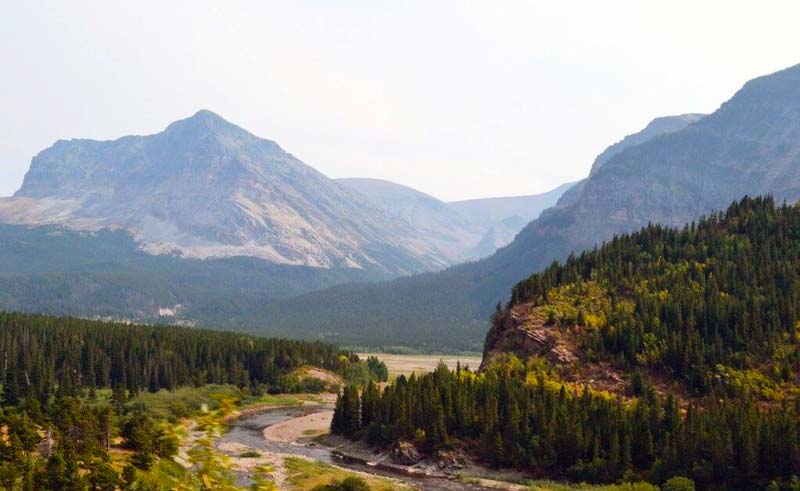
Glacier National Park is called the “Crown of the Continent” for good reason. It’s one of the few areas in the lower 48 states where you can see 25 active glaciers that never completely melt. Yet, when the considerable winter snows start to melt in spring, it works to feed a bevy of streams and lakes.
The park is home to more than 100 lakes, a thousand different plants and hundreds of animal species. The highlight of a visit is traveling along the nearly 50-mile Going-to-the-Sun Road, which connects the eastern and western entrances. The winding road can be bumper-to-bumper during peak summer months, but there are frequent pull-outs to allow faster cars to pass or for tourists to hop out and take photos.
To help reduce vehicular traffic along the Going-to-the-Sun Road, the National Park Service provides a free shuttle that makes frequent stops along the route. That way passengers can avoid the crowded, winding road and still stop at the visitors centers, gift shops and pull-offs, where they can snap some breathtaking photos of the mountains and valleys below.
Flathead Lake is a large, deep body of water located just south of Kalispell. It is 30 miles wide, and 16 miles long and gets as deep as 370 feet. The lake feeds five streams, all of which are famous for its trout, salmon and bass fishing.
There are some fun things to do indoors as well. The Miracle of America Museum in Polson, at the southern shore of Flathead Lake, hosts a collection of thousands of artifacts depicting the country’s history and modes of transportation.
The Charles E. Conrad mansion in Kalispell was once the home of an early pioneer who became a shipping magnate and trader. Visitors can take a guided tour of the 26-room mansion or walk through the impressive facility on their own.
Take a walk through the ruins of a historic mining town at Granite Ghost Town State Park. The mine was the richest silver mine on earth after its payload was discovered by a fluke. After years of unsuccessful operation, word was sent to shut it down. But the telegram was delayed, so workers carried on until the last blast of the last shift uncovered the bonanza. Once home to 3,000 people and dozens of businesses, the area is completely abandoned today.
Launching from St. Charles, Mo., in 1804, the Louis and Clark Trail traverses all four of the Pacific Northwest states until it connects with the Pacific Ocean near Astoria, Ore. Throughout your highway journey, you will encounter a large number of historical markers depicting the people, places and major events chronicled during the expedition led by Meriwether Lewis and William Clark.
As you plan your trip through the Pacific Northwest, consider Workamping in that region for a season or two. It is a fabulous way to truly experience the scenic beauty and diverse culture.
For more information about visiting the Pacific Northwest, contact these tourist agencies:
Montana – https://www.visitmt.com
Washington – https://stateofwatourism.com
Oregon – https://traveloregon.com
Idaho – https://visitidaho.org
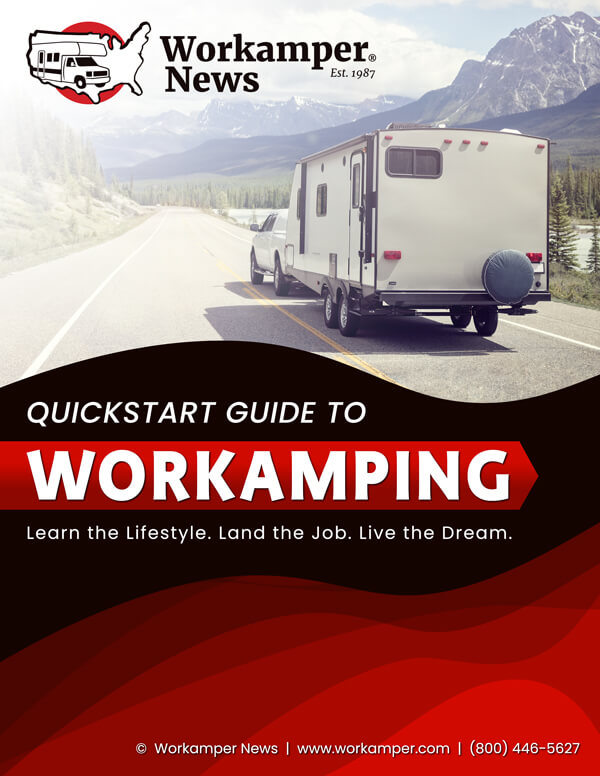
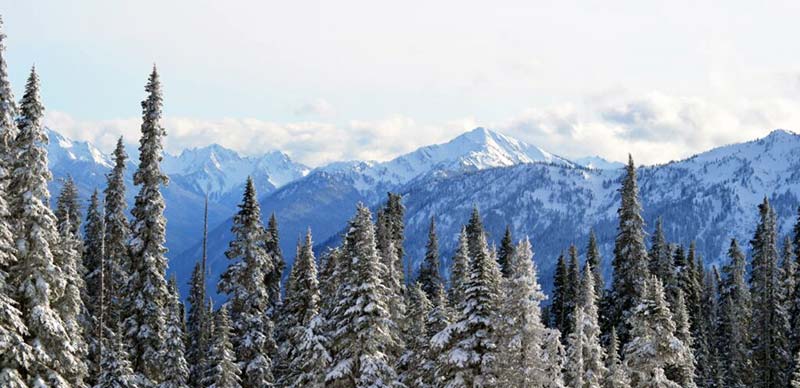

Leave a Reply